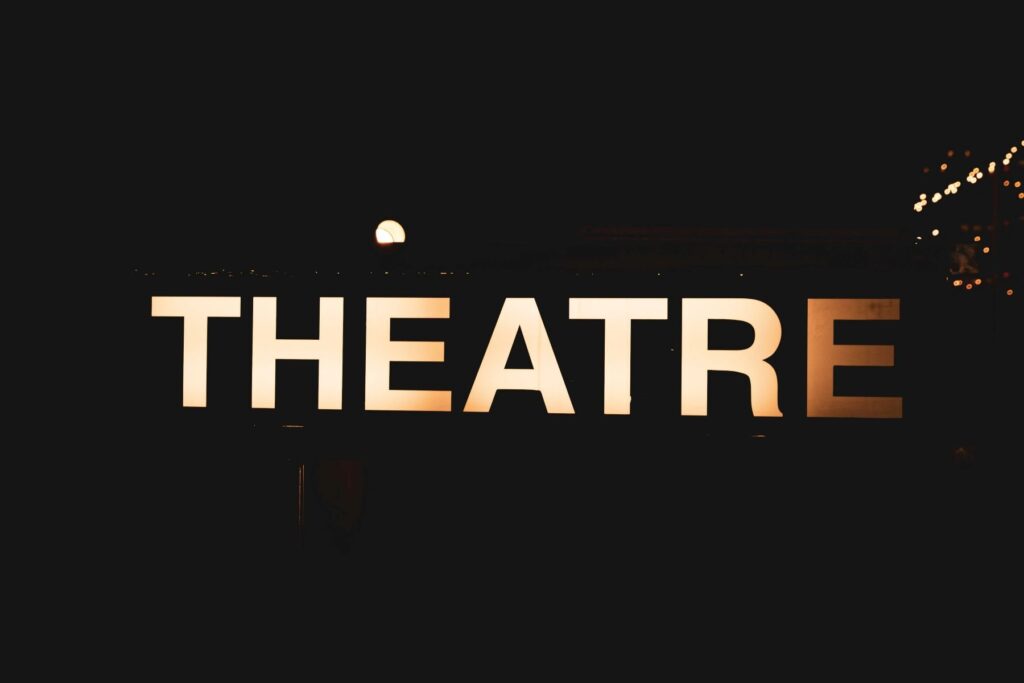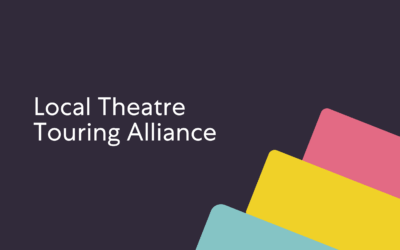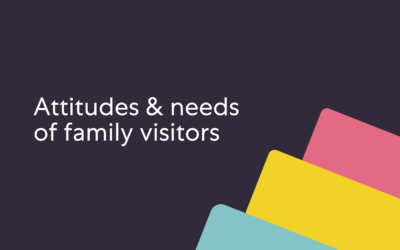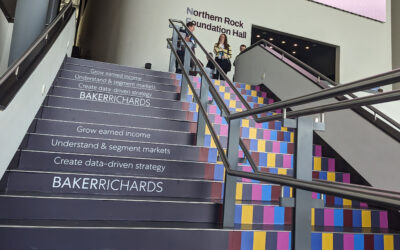
Reflecting on a recent panel discussion, David Reece of Baker Richards explores the future of theatre and its role in a rapidly changing world. Bringing together the insights of the panellists, he outlines some of the ways the sector might adapt.
Unlike law or medicine, theatre today – a publicly supported, professionalised sector – has only really existed since 1946, with the founding of the Arts Council of Great Britain. In less than a century, it’s moved from itinerant players and commercial rep to a national network of subsidised institutions, complex administrative ecosystems and a workforce of hundreds of thousands.
But what happens when the conditions that enabled that growth no longer exist?
Structural crisis
Between 1981 and 1991, the number of actors, directors and stage managers grew by 47% and by 2015, over 280,000 people were working in the performing and visual arts. Today, the broader sub-sector employs over 300,000, though numbers have dropped in the wake of the pandemic.
Yet despite this expansion, the system is increasingly brittle:
- 66% of theatre workers are freelance, and 73% earn under £25,000.
- Core funding has declined by 50% per head since 2009.
- A recent report shows theatres are staging fewer new productions.
- 28% of organisations ran a deficit in 2023/24, and 32% project a shortfall this financial year.
The crisis isn’t simply one of funding, it’s structural. Having inherited a model built on post-war assumptions – rising GDP, stable subsidy, expanding access – it’s now trying to operate in an environment of flatlining growth, individualised risk and shifting values.
There is – as yet – no bridge between the two.
That was the provocation behind a panel I recently chaired exploring theatre in 2050. Bringing together Katie Town (Theatre Royal Wakefield), Suba Das (director, writer and consultant) and Clare Hodgson (Diverse City), we weren’t interested in utopian futures or dystopian forecasts. We wanted to ask what the future of theatre might require of us now, what it might ask us to become, and what might be lost if we don’t.
The audience of tomorrow
The future audience will be more diverse. More polarised. More price-sensitive.
Real household disposable income (RHDI) per person is expected to grow by an average of 0.5% a year from 2025/26 to 2029/30. At the same time, the top 10% of earners now command nearly 50% of global income share.
Income inequality and demographic ageing are accelerating concurrently with the global population aged 60+ predicted to double to 2.1 billion by 2050.
So, what does it mean to programme for a world in which people live longer but earn less? What does accessibility look like in an era of economic precarity and widening inequality?
Theatres can no longer assume a stable, middle-class audience base. They must become more attuned to the lived realities of those priced out of participation. That doesn’t mean simply lowering prices, it means reimagining value, ownership and relevance.
The HMV analogy
Suba Das offered a striking analogy that shaped the conversation: the fate of HMV. The music giant had access to artists, catalogues and consumers. It had everything, except the capacity to adapt.
“They were tied into a certain shape of being,” Das said. That shape became their undoing. Theatre, too, has inherited a shape built on mid-20th century assumptions. A model that flourished under welfare state logic, but is struggling to operate in a fundamentally changed world.
Theatre, Das argued, faces its HMV moment. Not because it lacks talent or ideas, but because it remains tied to operating models that no longer reflect the world it serves. While institutions often provide security to ‘insiders’, it is independent artists and producers (those most exposed to risk) who are adapting fastest to new forms and formats. Many are moving into television, film, gaming and immersive media, not as a departure from theatre, but as a matter of financial necessity.
These are the people experimenting with form, engaging new audiences and responding to the cultural shifts that theatre will have to contend with in the decades ahead.
Which is why Das insisted that theatre boards and leadership teams must be informed by up-to-date sector insight. Artist development should not be seen as a charitable add-on, but as the research and development engine of the whole enterprise. Processes must be regularly reviewed to avoid rigidity. The health of the art form depends on the vitality of those creating it.
If institutions do not position themselves as active advocates and allies for artists, they risk irrelevance, trapped in yesterday’s assumptions, delivering ever-diminishing returns. We cannot innovate if we fail to unpick the structures that keep us standing still. The warning is not against tradition, but against inertia.
The value of place
Yet if we let go of old forms, what do we hold on to?
Katie Town, speaking from the deep history of Theatre Royal Wakefield, championed the value of place. Her building, which first opened in 1894, has already adapted: it has been a cinema, a bingo hall, and is now a thriving theatre again.
In an AI-dominated future, she argued, spaces of human-to-human connection will become more valuable, not less. Physical presence will feel special and audiences will seek it out.
This reframes the theatre building not as an anchor weighing us down, but as a sanctuary from algorithmic life. The challenge, then, is to make these buildings more permeable, more adaptive, more open to community life beyond the 7:30 curtain.
That might mean rehearsal rooms used as warm spaces, lobbies serving as childcare hubs, auditoriums programmed as much for dialogue as for spectacle, buildings as civic partners, not just cultural monuments.
The AI perspective
Clare Hodgson pushed this thinking further with the provocation “we’re already cyborgs”.
This wasn’t science fiction but everyday truth. She talked about the role of technology in enabling disabled artists to work and create, whether through titanium hips, eye-gaze software or remote rehearsal tools. Technology, she argued, isn’t inherently threatening. It expands who can participate in theatre, how they participate, and where. But only if we shape its use around our values.
What she envisioned was not avatar replacements of actors, but the creation of flexible support mechanisms for artists facing physical or caring constraints. Hers was a call to use emerging tools to expand, not contract, the ecology of human participation in performance.
Theatre has always existed in relation to its tools – masks, lighting, amplification, scenery. The question isn’t whether technology belongs in theatre, but whether it deepens or narrows who gets to make and share it.
The danger lies not in AI itself, but in what it reflects. If we train our tools on biased datasets and outdated systems, they will replicate and entrench inequality. The task is not to resist technology, but to instruct it differently.
Continues…

Screenshot of panel discussion with (clockwise from top left) Katie Town, Claire Hodgson, Suba Das and David Reece
The environmental constraint
Theatre, like every sector, is being reshaped by the climate emergency and, like every sector, it must ask what it is prepared to change. Hodgson challenged the obsession with growth. “Productivity”, she said, “has become a measure of value. But what if sustainability means doing less, better?”
Katie Town pointed out that, since 2017, Theatre Royal Wakefield has operated without regular subsidy. That financial constraint forced radical energy efficiencies resulting in a theatre that now uses less gas than a medium-sized house.
These environmental benefits weren’t driven by policy, but by necessity. They show what’s possible when we design with limits in mind.
Suba Das added urgency by challenging the carbon cost of the touring model and calling for hyperlocal strategies instead. Do we truly know the ten streets around our venues? Can we deepen impact by narrowing focus?
Environmental change isn’t just about new infrastructure. It’s about a new mindset, where sufficiency, frugality and imagination are signs of strength, not weakness.
Hyperlocal as strategy
Hyperlocalism emerged as a recurring theme. Town spoke of programming led by community consultation. Hodgson described “slow touring” – relationships built over years, not weeks. Das pointed to the environmental benefits of place-based work.
In an era of digital saturation and ecological crisis, the most radical act might be to stay put and listen. To create cultural relevance through specificity.
Hyperlocal work isn’t smaller in ambition. It’s deeper in intention. It also invites us to ask who theatre is for, and who decides. If cultural organisations become truly porous, responsive to place, context and voice, they become less like broadcast towers and more like wells. Places people return to, draw from and sustain together.
Practical possibilities
Alongside the philosophical depth, concrete innovations emerged:
- Theatre buildings as community infrastructure – spaces where care is delivered, creativity nurtured and connection made.
- Regional green stores – shared set and costume resources reducing environmental waste.
- Rep-based touring alliances – clustering productions geographically to cut travel.
- AI for admin, not artistry – automating processes like scheduling and invoicing to free capacity for creative work.
Each of these starts from a simple principle: adapt with purpose. Don’t use technology because it’s new, use it because it enables more participation, more access, more care.
Reimagining leadership
The conversation pointed to a leadership gap. Hodgson argued that those who have been marginalised have the adaptive expertise the sector needs most. “The more privilege you have,” she said, “the less you have to adapt.” But adaptation is what the future demands.
Leadership in 2050 may not be hierarchical or full time. It may be shared, project-based and shaped by lived experience. Theatres that thrive will build leadership capacity across generations, backgrounds and identities.
Das noted the stark structural divide between administrative and artistic staff, with most administrators salaried and most artists freelance. Reimagining leadership also means rebalancing power and agency across the ecology of theatre-making.
What if every organisation began by asking: where does our wisdom really sit? What lives outside our payroll? How do we shift from command to care?
Theatre as social laboratory
Ultimately, the event revealed theatre’s deeper potential: to become a laboratory for broader social innovation. The challenges facing the sector – inequality, climate, automation – are shared across society. If theatre can find new ways to distribute power, share resources and centre care, it may model new possibilities for others too.
Theatre has never just been about telling stories. It’s about rehearsing futures. The future we need values presence, plurality and planetary care. This is not just an artistic challenge, it is a civic one.
An open future
Theatre’s future is not fixed. It will be shaped by the choices we make now to adapt, to include, to listen, to imagine.
As Hodgson reminded us: “We’re at a crucial moment. We either get completely behind this project – for rights, for communities, for cultural life – or the project we’ve all worked so hard for falls away.”
The question is no longer how to protect what we have. It is how to evolve into what we need to become. And if that journey is occasionally mischaracterised, oversimplified or framed to provoke rather than understand, we can take heart in knowing that deeper truths take longer to land.
The future of theatre is not a headline about AI. It’s a conversation, not a soundbite, a slow, collective act of reimagining. And in that shared act – one that values curiosity, courage and care – there is still so much possibility.





